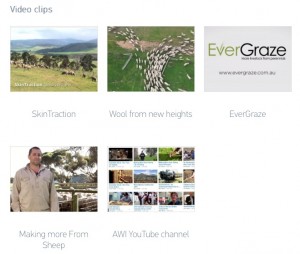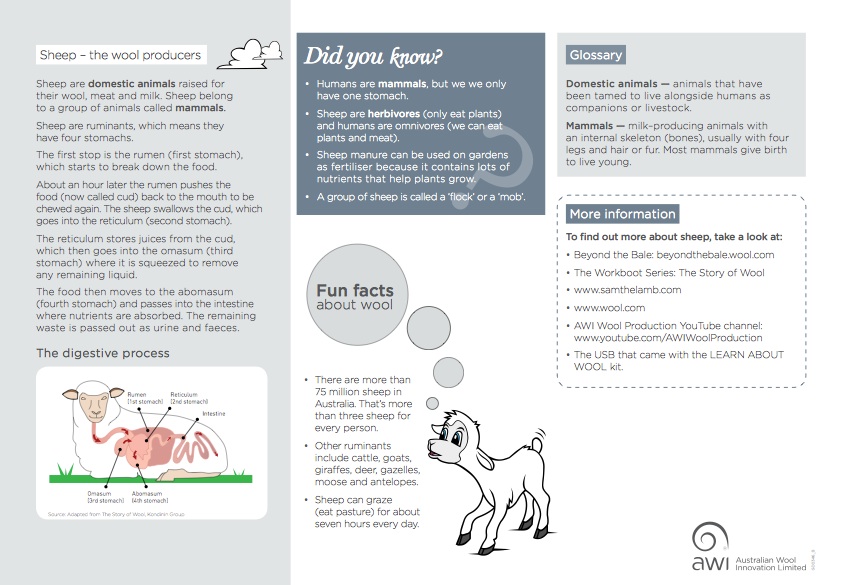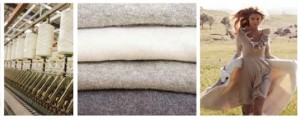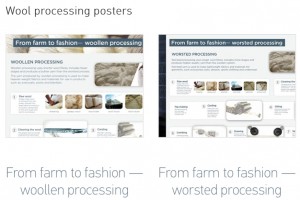Name: LEARN ABOUT WOOL~ From fibre to fashion
Subject: Design and Technologies
Technologies Context -> Food and Fibre Production
Year Levels: 3-4
Link to Resource: http://www.learnaboutwool.com/years-3-4/year-3-4-design-and-technologies/
Elaboration:
Australia’s wool industry provides the ideal opportunity for students across Years 3 and 4 to explore how sheep are managed sustainably to produce wool and how the properties of wool allow it to be used for a diverse range of everyday products.
Resource Description:
The LEARN ABOUT WOOL resources provide opportunities for Year 3 – 4 students to investigate where wool comes from, how wool is produced, the unique properties of wool and how these properties influence the use and behaviour of the wool-based end products. Students also use the Australian wool industry as the basis for investigating the world-class technologies and methods used in modern fibre production.
The curriculum-based resource packages (The Properties of Wool and Modern Wool Production) include a variety of interactive resources, including a downloadable PDF factsheet, websites, applications and age-appropriate video clips.
How to use these resources
- Students watch the videoclips on where wool comes from and how its processed
- Factsheets on keys points are handed out (example shown below)
- Useful links to websites about wool and its production are viewed; such as the CSIRO which illustrates the many positive attributes that make wool a unique fibre. Found at http://www.scienceimage.csiro.au/tag/animal-products/i/1054/wool-8211-fibre-of-the-gods/
- Students interact (see and feel) with real samples of raw and processed fibre, yarn and fabric which are included in the hard copy version of the Learn About Wool kit.
- Youtube link: Woolmark YouTube Channel https://www.youtube.com/watch?v=AHKmTBIxk3A
Covers differing properties of wool in various circumstances, and also provides videos such as ‘How my sweater came to be’ covering from the farm to production
Additional resources:
- Woolmark YouTube channel; A range of video clips; which describe the properties of wool that are useful for designers. Can be viewed at https://www.youtube.com/user/WoolmarkOnline
- Comic; ‘The Wool Producing Factory’, a cartoon step by step visual on the production process of wool. Found at http://www.learnaboutwool.com/sam-the-lamb/#prettyPhoto[gallery2]/0/
- Magazine; The Australian Wool Innovation Limited has their own publication ‘Beyond the Bale’ which shows the varied use of Australian wool from Fashion to Football. Found at http://beyondthebale.wool.com/#folio=4
- App; ‘The Wool Lab Interiors app’ ‘A guide to the most inspiring trends and to the best wool products, created by The Woolmark Company to inspire and inform textile professionals regarding the infinite potential of Merino wool.’
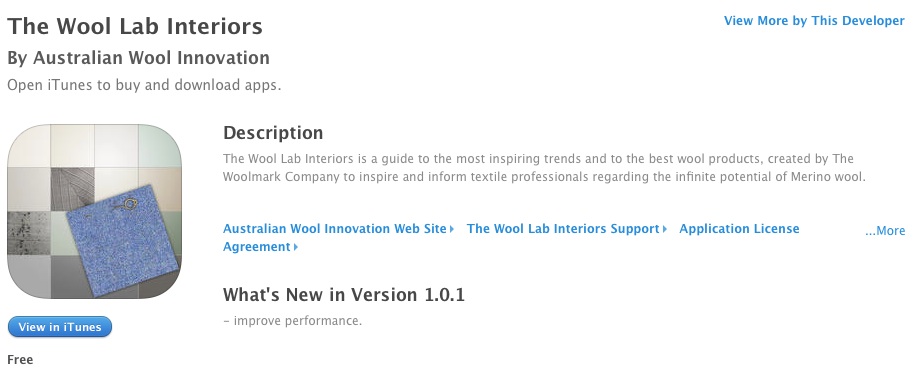
ACARA Links
Resource: The Properties of Wool
Fact sheet: PDF link; http://www.learnaboutwool.com/wp-content/uploads/sites/11/Primary_Properties-of-Wool.pdf
Strand: Design and Technologies Knowledge and Understanding
Substrand: Technologies context -> Engineering principles and systems
- Investigate how forces and the properties of materials affect the behaviour of a product or system (ACTDEK011)
Elaboration; Students explore and conduct investigation into the resources in order to understand the characteristics and properties of wool, which may affect the behaviour and performance of a product (eg flammability for children’s pyjamas, thermal properties for winter garments, breathability for sportswear etc)
Strand: Design and Technologies Knowledge and Understanding
Substrand: Technologies context -> Food and Fibre Production
- Recognise/ investigate the contribution food and fibre production and food technologies make to modern and traditional societies (ACTDEK012)
Strand: Design and Technologies Processes and production skills
Substrand: Investigating & defining, designing, producing & implementing, evaluating, collaborating & managing
- Opportunities to incorporate the full strand, depending on the classroom activity being undertaken. (ACTDEP014 – ACTDEP018)
Resource: Modern Wool Production
Fact sheet: http://www.learnaboutwool.com/wp-content/uploads/sites/11/Primary_Wool-Production.pdf
Strand: Design and Technologies; Knowledge and Understanding
Substrand: Technologies context -> Food and fibre production
- Investigate food and fibre production and food technologies used in modern and traditional societies (ACTDEK012)

Strand: Design and Technologies; Processes and production skills
Substrand: Investigating & defining, designing, producing & implementing, evaluating, collaborating & managing
- Opportunities to incorporate the full strand, depending on the classroom activity being undertaken. (ACTDEP014 – ACTDEP018)
Cross Curricular Priorities:
Sustainability
Asia and Australia’s engagement with Asia
General Capabilities:
Literacy
Numeracy
Critical & Creative Thinking (CCT)
Intercultural Thinking (ICU)
Links to other Learning Areas:
Science (ACSSU074) (Years 1 – 8)
Geography (Years 1, 4, 5, 9)
History (Years 2, 4, 5)
English
Economics & business (Years 7, 9, 10)



